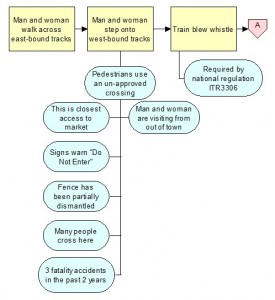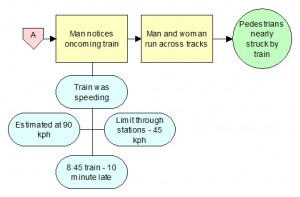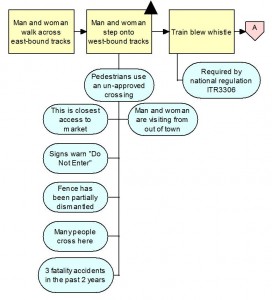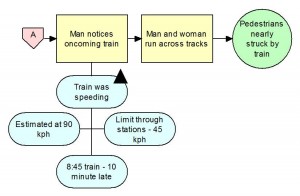Safeguard Analysis for Finding Causal Factors
Once you’ve gathered all the information you need for a TapRooT® investigation, you’re ready to start with the actual root cause analysis. However, it would be cumbersome to analyze the whole incident at once (like most systems expect you to do). Therefore, we break our investigation information into logical groups of information, called Causal Factor groups. So the first step here is to find Causal Factors.
Remember, a Causal Factor is nothing more than a mistake or an equipment failure that, if corrected, could have prevented the incident from happening (or at least made it less severe). So we’re looking for these mistakes or failures on our SnapCharT®. They often pop right off the page at you, but sometimes you need to look a little harder. One way to make Causal Factor identification easier is to think of these mistakes as failed or inappropriately applied Safeguards. Therefore, we can use a Safeguard Analysis to identify our Causal Factors.
There are just a few steps required to do this:
First, identify your Hazards, your Targets, and any Safeguards that were there, or should have been there.
Now, look for:
– an error that allowed a Hazard that shouldn’t have been there, or was larger than it should have been;
– an error that allowed a Safeguard to be missing;
– an error that allowed a Safeguard to fail;
– an error that allowed the Target to get too close to a Hazard; or
– an error that allowed the Incident to become worse after it occurred.
These errors are most likely your Causal Factors.
Let’s look at an example. It’s actually not a full Incident, but a VERY near miss. This video is a little scary!
Train Pedestrian Incident from TapRooT® Root Cause Analysis on Vimeo.
Let’s say we’ve collected all of our evidence, and the following SnapCharT is what we’ve found. NOTE: THIS IS NOT A REAL INVESTIGATION! I’m sure there is a LOT more info that I would normally gather, but let’s use this as an example on how to find Causal Factors. We’ll assume this is all the information we need here.


Now, we can identify the Hazards, Targets, and Safeguards:
| Hazard | Safeguard | Target |
| Moving Train | Fence | Pedestrians |
| Pedestrians (they could have stayed off the tracks) |
Using the error questions above, we can see that:
– An error allowed the Hazard to be too large (the train was speeding)
– An error allowed the Targets to get too close to the Hazard (the Pedestrians decided to go through the fence, putting them almost in contact with the Hazard)
These 2 errors are our Causal Factors, and would be identified like this:
We can now move on to our root cause analysis to understand the human performance factors that lead to this nearly tragic Incident.
Causal Factors are an important tool that allow TapRooT® to quickly and accurately identify root causes to Incidents. Using Safeguard Analysis can make finding Causal Factors much simpler.
Sign up to receive tips like these in your inbox every Tuesday. Email Barb at editor@taproot.com and ask her to subscribe you to the TapRooT® Friends & Experts eNewsletter – a great resource for refreshing your TapRooT® skills and career development.






